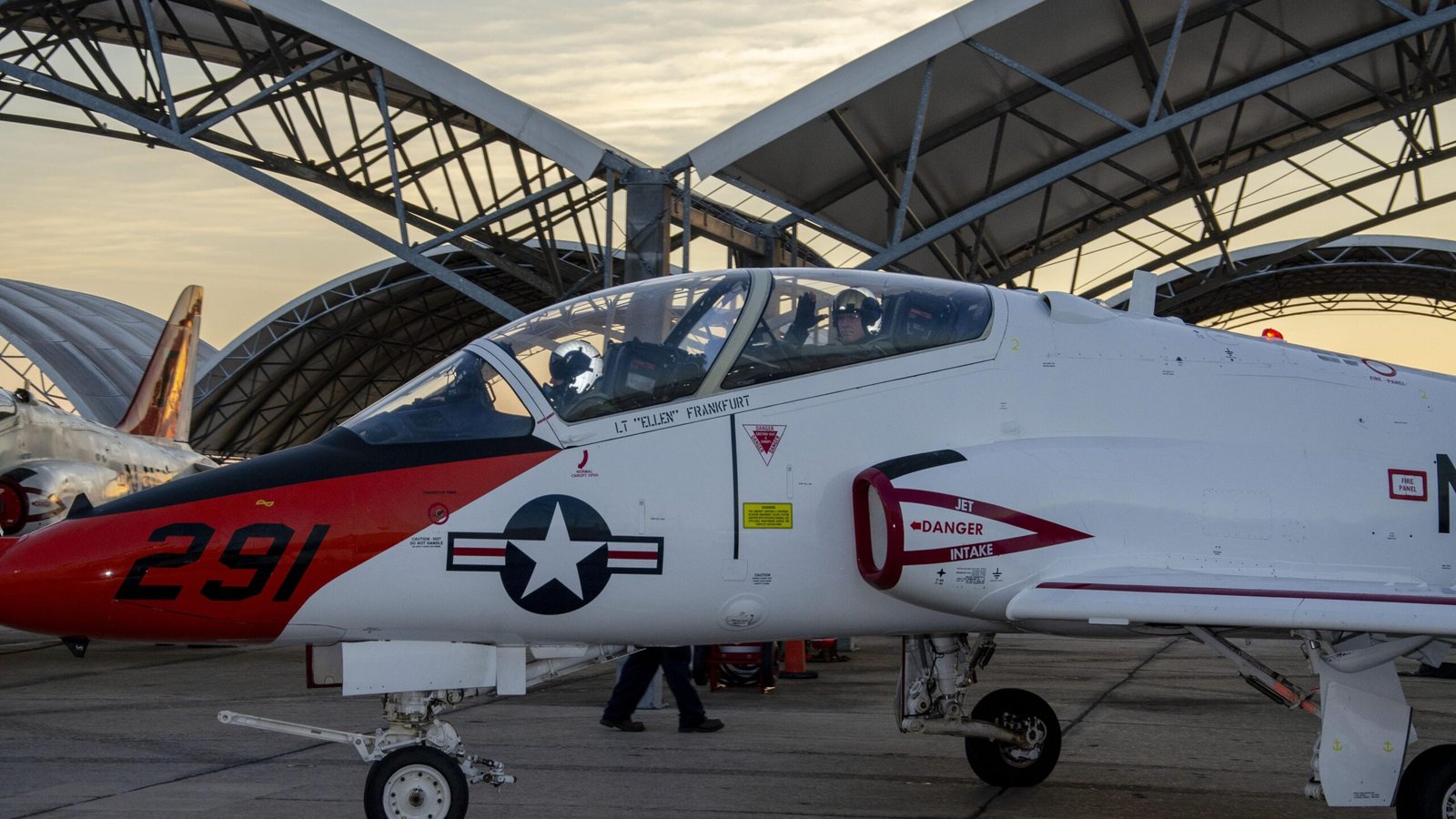Chief of Naval Air Training (CNATRA) has resumed T-45C Goshawk aircraft flight operations today.
The Navy and Marine Corps’ fleet of T-45Cs have been on a safety pause since Oct. 14 following the discovery of an engine blade failure. Engineering analysis has revealed that a subset of T-45C engine blades do not meet the manufacturer’s engine specifications; those aircraft remain grounded. The T-45Cs that have returned to flight contain engines that are compliant with these specifications.
“The process of returning to operations is based off engineering analysis by NAVAIR, with the most important decision being the safety of our aviators,” said CNATRA Rear Adm. Richard Brophy. “The aircraft we are flying are verified and known-good. We have the highest confidence in the compliance of these aircraft.”
Flight operations for the rest of the T-45C fleet will remain paused as the Navy and its industry partner Rolls Royce continue to evaluate engineering data on the non-conforming parts and work to return additional T-45Cs to operational status. During this time, training air wings and squadrons are maximizing ground training, including classroom lectures, simulators and computer-based training.
The T-45C is a tandem-seat jet trainer whose mission is to train Navy and Marine Corps pilots.
“We sincerely thank the team at NAVAIR for their hard work and commitment to finding the best possible solution for the long-term safety of our aviators and aircraft. While the reintroduction of the T-45C fleet will be a staggered approach, it is not a process that will be rushed. It is essential that our maintenance partners analyze and diagnose this issue thoroughly so training operations can fully resume with the safety of each of our aviators as a top priority,” said Brophy.
“Safety of our student aviators and instructors is paramount,” said Rear Adm. John Lemmon, Program Executive Officer for Tactical Aircraft Programs (PEO(T)). “Our Navy teams and industry partner are diligently and thoroughly analyzing all facets of this issue to determine a safe and expeditious way forward for the rest of the T-45 fleet to return to flight.”

